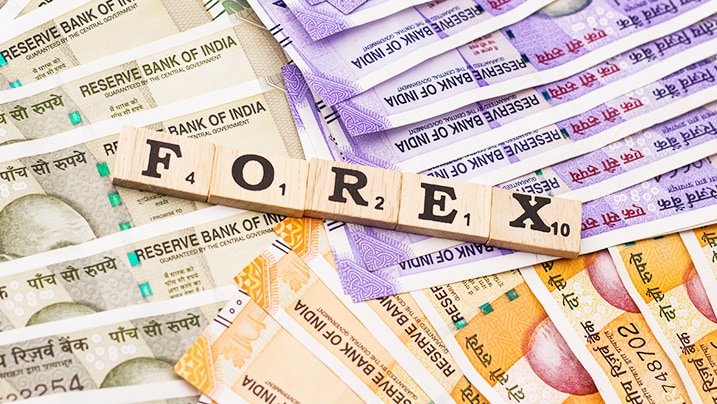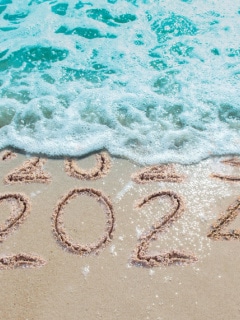CKYC Registry
-
Customer Service Contact us Service request Locate a branch
Find all the help you need
Scan the QR, get our app, and find help on your fingertips

Help CenterSupport topics, Contact us, FAQs and more
-
Login
Are you ready for an upgrade?
Login to the new experience with best features and services
-
Login
Are you ready for an upgrade?
Login to the new experience with best features and services
- Accounts
-
Deposits
IDFC FIRST Bank Deposits
View all Deposits -
Loans
IDFC FIRST Bank Loans
View all Loans - Wealth & Insure
-
Payments
IDFC FIRST Bank Payments
View all Payments -
Cards
IDFC FIRST Bank Cards
View all Cards - Blogs
- Corporate Account
-
Cash Management Services
IDFC FIRST Bank Cash Management Services
View all Cash Management Services - Supply Chain Finance
-
Corporate Lending
IDFC FIRST Bank Lending
View all -
Treasury
IDFC FIRST Bank Treasury
See more details - NBFC Financing
Support topics, Contact us, FAQs and more
- IDFC FIRST Bank Accounts
-
Savings Account
-
Corporate Salary
Account -
Senior Citizens
Savings Account -
First Power
Account -
Current Account
-
NRI Savings
Account -
TASC Institutional
Account -
Savings Account
Interest Calculator
- IDFC FIRST Bank Deposits
-
Fixed Deposit
-
Recurring Deposit
-
NRI Fixed Deposit
-
Safe Deposit Locker
-
FD Calculator
-
RD Calculator
- IDFC FIRST Bank Loans
-
Personal Loan
-
Consumer Durable
Loan -
Home Loan
-
Business Loan
-
Professional Loan
-
Education Loan
-
New Car Loan
-
Pre-owned Car Loan
-
Two Wheeler Loan
-
Pre-owned Two
Wheeler Loan -
Commercial Vehicle
Loan -
Gold Loan
-
Loan Against Property
-
Loan Against Securities
-
Easy Buy EMI card
-
Personal Loan
EMI Calculator -
Education Loan
EMI Calculator -
Home Loan
EMI Calculator -
EMI Calculator
-
Personal Loan Eligibility Calculator
- IDFC FIRST Bank Wealth & Insure
-
FIRST Select
-
FIRST Wealth
-
FIRST Private
-
Mutual Funds
-
Sovereign Gold Bond
-
Demat Account
-
Term Insurance
-
Life Insurance
-
Health Insurance
-
General Insurance
-
Bonds
-
Loan Against
Securities -
Portfolio Management
Service
- IDFC FIRST Bank Payments
-
FASTag
-
Credit Card
Bill Payments -
UPI
-
Funds Transfer
-
Forex Services
-
Pay Loan EMI
- IDFC FIRST Bank Cards
-
Ashva :
Metal Credit Card -
Mayura :
Metal Credit Card -
FIRST Millennia
Credit Card -
FIRST Classic
Credit Card -
FIRST Select
Credit Card -
FIRST Wealth
Credit Card -
FIRST WOW!
Credit Card -
Deals
-
Debit Cards
-
Co-branded Cards
-
Credit Card
EMI Calculator -
FIRST Corporate
Credit Card -
FIRST Purchase
Credit Card -
FIRST Business
Credit Card
- Premium Metal Credit Cards
-
AshvaLifestyle1% Forex₹2,999
-
MayuraLifestyleZero Forex₹5,999
-
FIRST PrivateInvite Only
- Best for travellers
-
MayuraZero ForexMetal₹5,999
-
Ashva1% ForexMetal₹2,999
-
FIRST WOW!Zero ForexTravelLifetime Free
-
FIRST SWYPTravel OffersEMI₹499
-
FIRST Select1.99% ForexLifestyleLifetime Free
-
FIRST Wealth1.5% ForexLifestyleLifetime Free
-
Club VistaraTravelLifestyle₹4,999
-
IndiGo IDFC FIRST Dual Credit CardTravelLifestyle₹4,999
- Max benefits, Free for life
-
FIRST Classic10X RewardsShoppingNever Expiring Rewards
-
FIRST Millennia10X RewardsShoppingNever Expiring Rewards
-
FIRST Select10X RewardsLifestyle1.99% Forex
-
FIRST Wealth10X RewardsLifestyle1.5% Forex
-
FIRST WOW!RewardsTravelZero Forex
-
LIC ClassicRewardsInsuranceShopping
-
LIC SelectRewardsInsuranceShopping
- Reward Multipliers
-
AshvaLifestyleMetal₹2,999
-
MayuraLifestyleZero Forex₹5,999
-
FIRST ClassicNever Expiring RewardsShoppingLifetime Free
-
FIRST MillenniaNever Expiring RewardsShoppingLifetime Free
-
FIRST SelectNever Expiring RewardsLifestyleLifetime Free
-
FIRST WealthNever Expiring RewardsLifestyleLifetime Free
- Rewards & Credit on UPI
-
FIRST Power+FuelUPI₹499
-
FIRST PowerFuelUPI₹199
-
FIRST EA₹NVirtual1% Cashback₹499
-
FIRST DigitalVirtualUPI₹199
-
IndiGo IDFC FIRST Dual Credit CardUPITravelDual cards
- Fuel and Savings
-
FIRST PowerRewardsUPI₹199
-
FIRST Power+RewardsUPI₹499
-
LIC ClassicRewardsInsuranceShopping
-
LIC SelectRewardsInsuranceShopping
- Express and Flaunt
-
AshvaMetal1% Forex₹2,999
-
MayuraMetalZero Forex₹5,999
-
FIRST SWYPEMIOfferMAX₹499
-
FIRST MillenniaRewardsShoppingLifetime Free
- FD Backed rewarding Credit Cards for all
-
FIRST EA₹NVirtualCashback₹499
-
FIRST WOW!Zero ForexTravelLifetime Free
-
CreditPro Balance TransferTransfer & SaveReduce InterestPay Smartly
- IDFC FIRST Bank NRI Forex Solutions
-
Send money to India-Wire transfer
-
Send money to India-Digitally
-
Send money abroad
-
Max Returns FD (INR)
- IDFC FIRST Bank MSME Accounts
-
Platinum Current
Account -
Gold
Current Account -
Silver Plus
Current Account -
Merchant Multiplier
Account -
Agri Multiplier
Account -
TASC Institutional
Account -
Dynamic Current
Account -
World business
Account -
First Startup
Current Account
- IDFC FIRST Bank Business Loans
-
Business Loan
-
Professional Loan
-
Loan Against Property
-
Business Loan for Women
-
Working Capital Loan
-
Construction Equipment Loan
-
Machinery Loan
-
Healthcare Equipment Loan
- IDFC FIRST Bank Business Solutions
-
Payment Solutions
-
Tax Payments
-
Doorstep Banking
-
Point of Sale (POS)
-
Escrow Accounts
-
NACH
-
Payment Gateway
-
UPI
-
Virtual Accounts
-
As per amendment in the Income Tax Rules, PAN or Aadhaar are to be mandatorily quoted for cash deposit or withdrawal aggregating to Rupees twenty lakhs or more in a FY. Please update your PAN or Aadhaar. Kindly reach out to the Bank’s contact center on 1800 10 888 or visit the nearest IDFC FIRST Bank branch for further queries.
-
-
Most Searched
Sorry!
We couldn’t find ‘’ in our website
Here is what you can do :
- Try checking the spelling and search
- Search from below suggestions instead
- Widen your search & try a more generic keyword
Suggested
Get a Credit Card
Enjoy Zero Charges on All Commonly Used Savings Account Services
Open Account Now
Forex trading in India: An introduction for new traders
The foreign exchange market is also referred to as the forex or FX market. In today’s age, it is powered by telecommunications technology and remains active 24 hours a day. It facilitates over-the-counter transactions in individual currencies between two participants where each individual currency is a market in itself, like the USD market or the GBP market. The foreign exchange market also sees a high volume of interbank transactions, which often define the currency values. Forex markets originated due to the requirements of traders to settle international trades. FX markets remain the oldest financial markets and have a large say in global financial liquidity.
How does it operate?
Categories: Foreign exchange market has two distinct trading communities:
Interbank FX market has a network of banks and institutions who trade in currencies among themselves. These transactions are generally of very high volume, and make up for the bulk of the global forex market volume. The currency desks of different trading banks transact continuously, which keeps the currency exchange rate uniform.
The retail forex market, on the other hand, has a large number of traders. The trading volume is, however, less than the interbank market as the value per transaction is low.
Let's get familiar with the different types of the forex market:
The trading in the spot market happens at the place of transaction with immediate effect or within a short time.
In the forward market, the transaction happens at a future date or range of dates, based on a customised contract between the parties to trade the currency at a pre-decided exchange rate.
The futures FX market is also a contract to trade in the currency on a specified date and exchange value. But unlike forwards, a futures contract is standardised, legally enforceable and can be traded on an exchange.
Foreign currency swap also involves a forward contract at which future payment is made between two parties. However, before that, a currency swap takes place between the two parties at a spot rate. The swap happens with the same value of the two respective currencies exchanged between the two parties.
Purpose of the forex market
Hedging of currency risk is one of the two drivers behind the foreign exchange market. Through the FX market, a party to an international transaction can fix the currency value at which the transaction will be calculated. This insulates the party from a sudden devaluation in the foreign currency.
The volatility of the foreign exchange market offers good grounds for speculation among investors. While hedging may seem like an institutional decision to manage exchange rate risks, retail traders stand to make the most out of foreign exchange trading for speculative gains.
READ MORE
Operational details
There are two currencies involved in any forex trade, the first listed currency is called the base currency while the second one is called quote currency. If INR is the base currency while GBP is the quote, INR/GBP traded at 0.0097 means that one INR is equal to 0.0097 GBP.
Traders will find currency pair classifications like major pairs (seven major currency pairs like EUR/USD, GBP/USD etc.), minor pairs like GBP/JPY, exotic pairs like GBP/MXN, and regional pairs like AUD/NZD.
The exchange rates fluctuate due to the demand-supply dynamics but are also affected by central banks as they control the currency supply. The country’s economic performance, current affairs and market sentiments also influence the domestic currency’s exchange rate.
Indian currency market
In India currency futures can be traded in popular exchanges like NSE, BSE and MCX. The trader here needs to open a forex trading account with the broker, and trading is done between 9 am and 5 pm. The trades do not involve any physical delivery and are cash-settled.
To make your first forex trade, you have to firstly open the currency trading account. You have to fulfil the broker’s KYC requirement for this. You will have to deposit a margin amount, which is the deposit amount that the broker holds while your forex trade remains open. You can start trading once your broker shares the access credentials to your trading account.
Foreign currency swap also involves a forward contract at which future payment is made between two parties. However, before that, a currency swap takes place between the two parties at a spot rate. The swap happens with the same value of the two respective currencies exchanged between the two parties.
Risks involved
As mentioned above, various factors influence the exchange rate of a currency. What a central bank of a country decides is subject to the internal monetary policy of the country. If your trade involves that country’s currency, it will be subject to unexpected fluctuations. Therefore, currency trading is considered to be a high-risk playground.
Among the other key considerations, the main risk is an adverse change in the exchange rate. For speculators, this can lead to huge losses, if not chosen and monitored timely and regularly. There is also a credit risk regarding the non-payment of an outstanding currency position. Leverage risk is the risk of a loss beyond the margin amount. Aggressive use of this leverage amount can increase the amount of loss for the trader. Besides factors like fluctuation in the forward spread, mismatch in the forward contract amount and maturity gap in the transaction can add up the interest rate risk of the trader.
Choosing the right broker
If you are trading in FX through a broker, make sure that it is registered with the exchange and is of good repute. The leverage and margin options offered by the broker is also important. A 10:1 leverage in your margin account can allow you to take an FX position of Rs 1 lakh with a margin deposit of Rs 10,000. More aggressive leverage of, say, 100:1 may be offered by another broker. This can look good in case of a winning position, but also magnify losses in an adverse currency situation. The charges of the broker should matter to you. Find out if it is a fixed rate commission or the broker prefers to widen your spread (the difference between your bid and ask rates for the traded currency pair) and make money from it. The initial deposit required by the broker shouldn’t be too high, and the deposit and withdrawal processes should be convenient. And of course, the broker should offer you the currency pairs that you prefer to trade in.
Your trading style
There are different types of trading strategies popular among forex speculators, some like Daily Fibonacci Pivot Trade can take some time to grasp. Scalping is one of the simpler strategies where you day trade several times while carrying a position in another period. Scalpers keep a tab on important news releases like GDP, unemployment rate and inflation and try to make multiple small profits in a single day. On the other hand, in the positional trading strategy, you hold your longer position and profit from large market movements.
Whatever be your trading style, you should keep a check on your use of leverage and monitor the market movements regularly to avoid or minimize any forex losses.
IDFC FIRST Bank offers a great way of organizing your funds with a savings account. You can visit our website or download the mobile banking app today
Disclaimer
The contents of this article/infographic/picture/video are meant solely for information purposes. The contents are generic in nature and for informational purposes only. It is not a substitute for specific advice in your own circumstances. The information is subject to updation, completion, revision, verification and amendment and the same may change materially. The information is not intended for distribution or use by any person in any jurisdiction where such distribution or use would be contrary to law or regulation or would subject IDFC FIRST Bank or its affiliates to any licensing or registration requirements. IDFC FIRST Bank shall not be responsible for any direct/indirect loss or liability incurred by the reader for taking any financial decisions based on the contents and information mentioned. Please consult your financial advisor before making any financial decision.
The features, benefits and offers mentioned in the article are applicable as on the day of publication of this blog and is subject to change without notice. The contents herein are also subject to other product specific terms and conditions and any third party terms and conditions, as applicable. Please refer our website www.idfcfirst.bank.in for latest updates.























